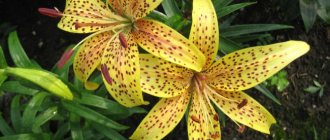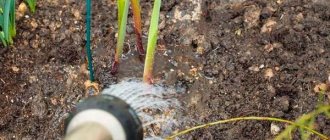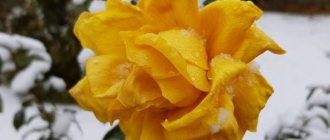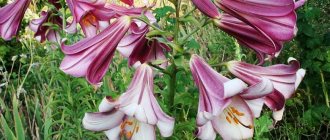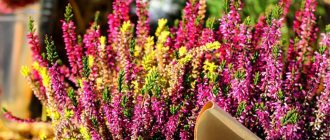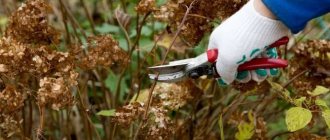With the onset of autumn, insects begin to prepare for the winter period. Since humans regularly take some of the honey from domestic bees, there is a danger that the rest of it will be disposed of incorrectly. Therefore, in order for insects to survive the cold season normally, the beekeeper needs to know how to correctly form a bee nest for the winter.
Preparation
When should you start preparing for assembly and how to do it correctly? The preparation of bees for wintering begins in the second half of August. Beekeepers stop feeding drones and fill all sorts of gaps in the hive with sticky propolis. As soon as the drones become completely weak, they need to be removed.
How to collect the necessary information about the bee colony?
Before the inspection, you need to plan everything correctly. Initially, you need to draw up a work plan in order to disturb the insects less. Secondly, you need to prepare clothes and equipment necessary for work in advance.
It is important to consider that bees in the hive negatively perceive dark-colored clothing, wool or cloth. They can't stand bikes either. Third: you should get rid of any odors from your clothes (this applies to both pleasant and unpleasant ones). You can approach the hive only from the back or side, without thus blocking the insects’ main path and without creating unnecessary disturbances for them.
Advantages and disadvantages of wintering bees in polystyrene foam hives
In order to have less death in the spring, you need to ensure good ventilation in the hive. There are three types of ventilation:
- When brood is being fed in early spring, ventilation is minimal.
- During the thaw it is maximum.
- Summer ventilation is needed to get rid of excess moisture.
The advantages of polystyrene foam hives are that they:
- It has a high thermal resistance and is not affected by the humidity of the air that surrounds it.
- In polystyrene hives there is no additional heat conduction; heat resistance is the same on the walls, ceiling and floor.
- When air enters from the nest, the bee family becomes a carrier of heat, so it is important to put a special polyethylene film under the ceiling of the hive; it must be airtight, so wintering will be economical and successful.
- High-quality insulation of polystyrene foam hives will help retain heat on the walls and reduce it at the bottom, so there will be no sudden temperature changes.
- In polystyrene hives you need to take care of a large ventilation hole; in wooden structures it is used throughout the year.
- Special burning of the hive using a blowtorch is not required in polystyrene hives.
- Wintering for bees is dangerous because they are often bothered by parasites - mice. They chew through polystyrene foam without any problems, so the beekeeper must take care to protect the insects.
- In polystyrene foam hives there are no special canvases, pillows for insulation, or entrance valves.
Some beekeepers speak negatively about wintering outdoor hives in this type of hive; in the winter hut you have to constantly protect them from mice, but this is not difficult to do, there is a special device - a galvanized casing that is put on top and so the mouse will no longer be able to get into the hive. Many people use special plastic bags; the entrance needs to be protected with a grill.
Preparing for wintering in polystyrene foam hives
- Disinfections. To do this, use different detergents and disinfection solutions. Can be processed with a special device.
- Insects prefer to close gaps with propolis; the advantage of polystyrene hives is that there are no gaps in them.
- 4. Please note that beehives made from polystyrene foam cannot absorb moisture.
- 5. In order for the wintering of bees to be successful, it is necessary to paint the polystyrene foam hives using water-based paint and add color to it. This way you can protect yourself from some parasites.
Wintering of bees in polystyrene foam hives must be carried out in the air, so the flight will be early, the bees will be able to further increase their strength. The advantages of wintering in this type of hive are that you do not need to use additional pillows or warm side blocks. Bee disease - acarapidosis, causes, diagnosis and treatment methods
Disadvantages of wintering in polystyrene foam hives:
- The plastic case cannot fully absorb water; it ends up at the bottom of the device.
If we compare polystyrene foam with wood, we can conclude that in this hive the insects are too active, which is why a large amount of food is consumed. You have to leave up to 50 kg. In this situation, it is imperative to ensure good ventilation. This way, it will be possible to get rid of excess humidity, reduce high temperatures, which are dangerous for insects, calm winter clubs, and the amount of food will also decrease. Experienced beekeepers recommend using polystyrene foam structures for weak colonies and layering.
Hive inspection
Then the cells are inspected. Old, darkened ones must be replaced with new ones, otherwise there is a risk that the honey will quickly become sugary. Frames in the hive damaged by wax moths should be replaced with several new ones.
Disassembly for inspection must be done in sunny weather, without wind or precipitation, at an air temperature above sixteen degrees Celsius. If the bee colony is not aggressive, then you can get down to business on a cloudy day. The main thing is that there is no rain. The purpose of the inspection is to study the condition of the bee colony, after which the excess honeycombs are reduced without sowing.
The following criteria are also identified: the strength of the family, the presence of a fertile queen bee, the amount of sowing, the availability of food, its quality. The strength of a bee colony is determined by the number of frames on which the bees sit in the hive. Empty ones must be eliminated.
If one-day eggs are not found in the family, you need to carefully examine the frames to find the queen. If there are eggs, this indicates her presence. When the queen is not found, one control frame is placed, filled with seed from another bee colony. The strength with which the bee colony will spend the winter depends on sowing.
What do bees do in their hives in winter?
On warm days you can monitor the vital activity of bees, but from November to March they become less active, do not fly out of the hive and eat small amounts of food.
With the onset of winter, the bees begin to carefully plug the cracks, insulate the walls with propolis, and make the exit as narrow as possible. Such painstaking work will protect the bee colony from cold and precipitation.
After the work has been done, the insects gather into a dense living ball, which is formed on the outside by motionless old bees, and on the inside by living young ones. With constant movement, bees release energy and thereby create the temperature necessary for life.
The winter ball is located near the tray to regulate the flow of air and remove carbon dioxide from the hive. As the temperature rises or falls, the bee clump expands or contracts. If the weather is sunny and windless in winter, bees fly out of the hive and circle over the apiary, making a cleansing flight.
Regardless of the air temperature outside, the temperature in the hives remains stable within + 17 °C.
It is recommended to listen to the hives once a week, since the hum of the bees can determine the state of the bee colony:
- a quiet, even hum - the wintering of bees in the hive is going well;
- a barely audible rustling indicates a weakening of the family, in this case additional feeding is necessary;
- if there is no movement, the bee colony is considered dead.
At the end of February, the activity of bees increases, as it is necessary to raise the temperature in the hive for successful egg laying. At this time, careful care and additional feeding are needed.
Families that have wintered poorly greet spring hungry and weakened. Often in such bee colonies the queen dies and various diseases appear.
Winter is the most important and difficult period of time for bees. Since on cold days they selflessly fight for survival and make every effort to start working in the spring and produce tasty, healthy honey.
Reducing the scope
Where and how to start the reduction correctly and how many frames can be left for the bees for the winter? To correctly make a reduction, you need to open the upper part of the hive on both sides and see if insects are sitting on all the frames. If the hive is in a room with a temperature above zero, then you need to leave one or two frames more than free. The rest are deleted because they are superfluous. If the hive is outside, then the number of frames occupied by bees is the same number left.
It is especially important to avoid excessive compaction in the hive when it comes to strong colonies. Crowding will disrupt the club microclimate, which will cause disturbance of insects. In the case of weak families, it is better to form a nest of bees for the winter in beds next to another weak family.
Wintering in the wild
In the climate of Central Europe, bees winter well in the wild. This method has obvious advantages.
- Firstly, there is no need to build a winter hut, and the beekeeper does not need to waste time and effort cleaning the hives in the fall and putting them back in the spring.
- Secondly, bees retain the ability to fly around in good weather. During the flight, some bees die. These are mostly sick, old and worn-out insects.
- Thirdly, often when wintering in the wild, families with the onset of spring behave more actively, develop faster and, as a result, become more prepared for the spring honey harvest.
Wintering in the garden
The disadvantage of this method of wintering is that families wintering in the wild spend 2-3 kg of feed more than with another method. This food is consumed by the bees to maintain the necessary climate inside the hive.
Some beekeepers suggest additionally protecting the hives with snow, insulating the houses with it.
With the correct location of the apiary, protected from the wind by bushes, a high fence, buildings or forest, there will be no problem with strong winds. Also, during wintering, families whose hives are directed to the south receive a certain advantage during wintering. For additional protection from the wind, you can attach a board to the entrances at an angle to the front wall of the hive.
If the family remains to spend the winter in the wild, special attention should be paid to controlling the snow cover in the apiary. In case of heavy snowfall, you need to clear the snow around the hive so that it does not cover the entrance.
Wintering bees in a hive outside
This type of winter quarters is called “in the wild.” In order for families to survive the winter well, a number of conditions must be met:
- hives must be of good quality and insulated;
- ensure that mice or other pests cannot enter;
- the entrances are set up to the south;
- Only strong families should winter outside (if possible, the weak should be moved in with the strong);
- providing a sufficient supply of feed (at least 25 kg);
- All hives should be kept strictly under snow.
The disadvantages include the fact that you will need a large amount of food, you will need protection from birds, and you must also monitor the level of snow in the apiary. One of the advantages is that no special structure is required, there is no need to move families. In bees that winter in the wild, spring development begins faster.
Build process
Assembling nests for the winter is done in parallel with reducing the number of honeycombs.
Bee nest and different ways to assemble it for the winter:
- Place the outer frames filled with honey and completely sealed on two opposite sides of the nest. Partially sealed and low-copper frames are located centrally. This method is most effective if bees have had little seeding this year.
- Completely sealed frames are placed on one side only. At the back are half-sealed ones. Low-copper frames are placed on the opposite side. The last one to be placed is completely sealed. Typically this option is used if there has been a lot of sowing in the bee colony this year.
- Assembling a bee nest for the winter can be done using the “beard” method. Its essence is that sealed frames with honey are installed in the very center. The edges are low-copper. This method contradicts the natural life of bees, so it is rarely used.
Wintering of bees in omshanik
The most important thing when wintering in Omshanik like this is to observe the temperature regime of about +1..+3C degrees, and humidity (60-80%). All this can be ensured by good natural or artificial ventilation.
Only when the temperature is very low for a long time can you use a thermostat. One of the obvious advantages is that much less feed is required compared to other wintering methods.
Also, being in the omshanik, the hives are relatively safe, and it is also easier to conduct winter inspections of the colonies.
Of the minuses, the most significant is that the omshanik needs to be built, spending significant finances, and it occupies a fairly large area of your apiary.
A rare disadvantage may be that in the event of a strong increase in temperature inside the omshanik, it can be very difficult to lower the temperature. It is definitely recommended to use thermometers with hygrometers to monitor indoor temperature and humidity.
Recommendations
For a successful build, here are some tips to keep in mind:
- Take into account the climatic specifics of the regions. In the northern regions, preparations for assembly should begin in the second half of August; in the southern regions, it is permissible to begin work with the onset of the first autumn month.
- Assembling a nest for winter using the “beard” principle should be used in exceptional cases. It is dangerous because insects may not have enough food for the entire winter period. Therefore, it is better to stick to the first two assembly options.
- You should not replenish the bees' honey reserves with syrup, as this can weaken them by winter.
- Strong bee colonies are advised to make store-bought honey supers where the queen will lay eggs in the spring.
It is important to remember that human intervention in bee life should be kept to a minimum. It is necessary to develop the ability to read information about a bee family and its nest from the honeycombs. This will improve the insects' quality of life, which will be beneficial for the beekeeper. Before the onset of the winter period, it is important to adhere to all the basic rules for assembling a nest and the main deadlines in order to provide the insects with all the conditions for a successful wintering.
Why is it necessary to form bee nests?
Under natural conditions, bees prepare for winter properly, stocking up on enough food to last until spring. In the apiary, beekeepers take honey from the bees, constantly moving the frames, introducing themselves into their lives. In order for insects to survive safely until spring, and not die from hunger and disease, it is necessary to take care of them and assemble and form a nest.
Preparation for winter begins immediately after the main honey harvest (late summer - early autumn) and includes several activities:
- Inspection and assessment of the condition of the bee colony.
- Determining the amount of honey needed for the winter.
- Feeding individuals.
- Reducing the scope.
- Assembling the nest.
The inspection is carried out several times in order to correctly assess your further actions for assembling and forming the nest, and to do everything on time.
The final steps in decorating the nest
The procedure for the final creation of a nest occurs at the moment when most of the entire brood in the families has hatched. As for the middle zone, this event occurs in early September, the southern region - in early October. By this time, families should have sufficient food available.
Bees make a significant contribution to the preparation period, as they arrange food in a special way so that they always have access to it. The central honeycomb is left free to become a special bed in winter on which a club can form. The food is concentrated on the sides, as well as on top of the bee club.
The nest assembly process involves inserting frames into hives half filled with printed honey. There is no need to leave honeycombs that contain a lot of unsealed products, as this leads to liquefaction, souring, and absorption of unnecessary moisture and odors.
From the families you need to remove those frames that do not contain bees so that they do not become moldy. Depending on the characteristics of the family and their living conditions, it is necessary to correctly determine the volume of the nest. If it is necessary to reduce the volume, you should discard the excess sealant. This is especially true for strong families. This manipulation entails a change in the healthy microclimate, which causes the process of swarming among insects. According to numerous tests, those families that have a lot of food reserves tolerate wintering well in enlarged quarters.
Their assembly is very important when there are frames containing an insufficient amount of honey, and there is also a shortage of feed. In this situation, it is carried out with a “beard”, when a filled frame is placed in the center against the tap hole. Along the edges, frames are placed filled with a small amount of honey products, using a descending order.

